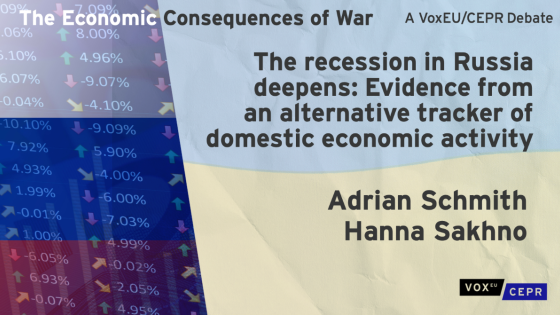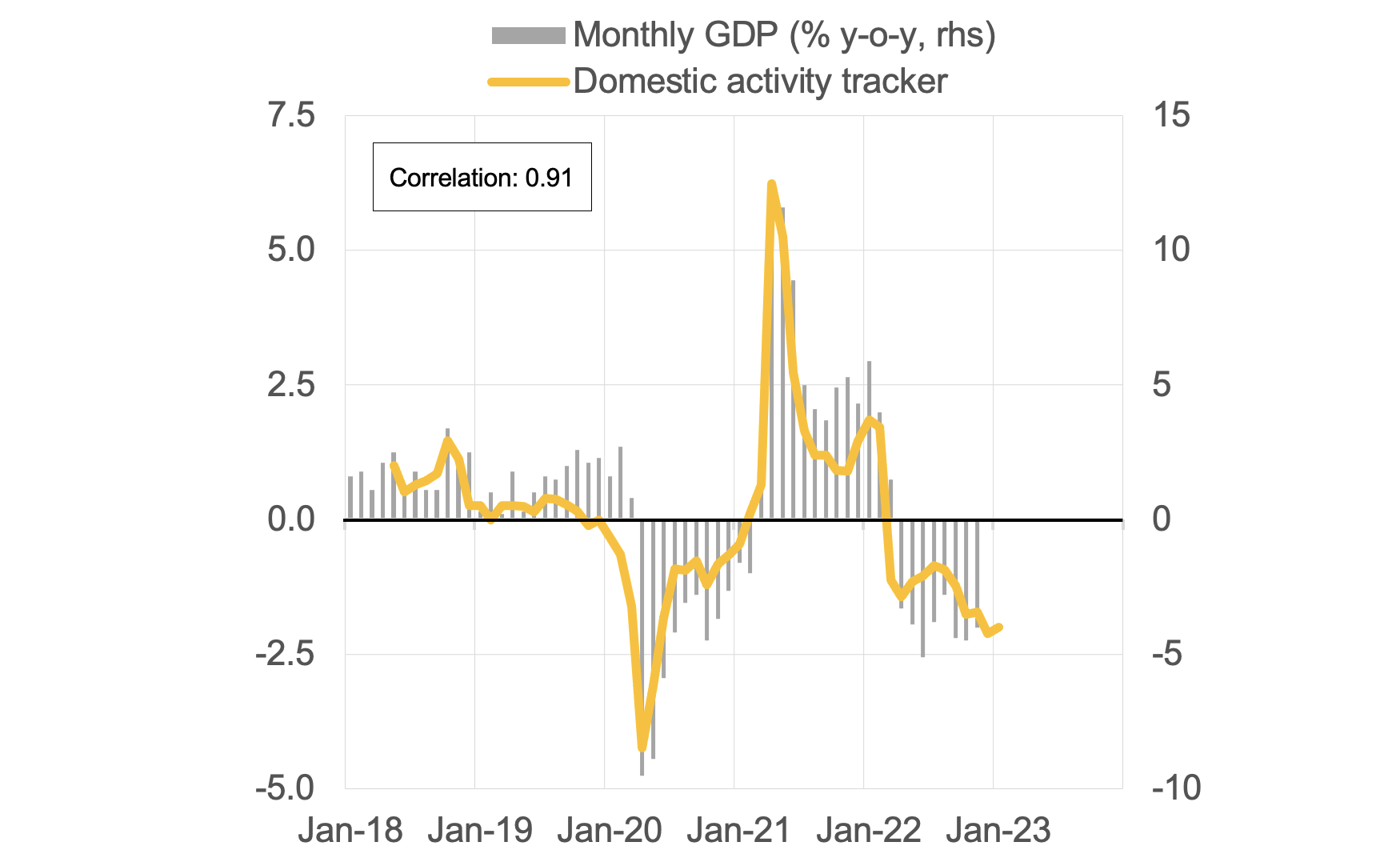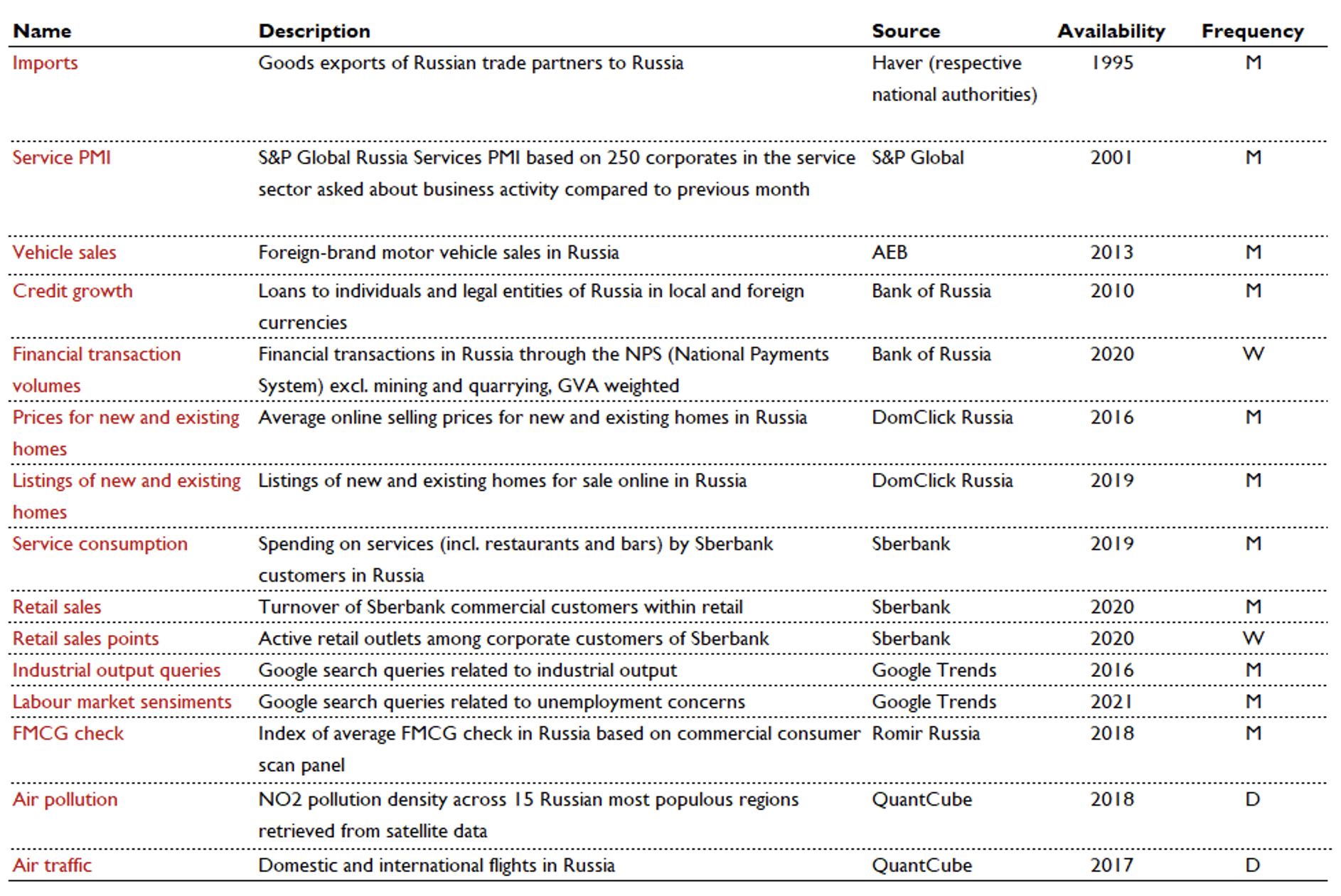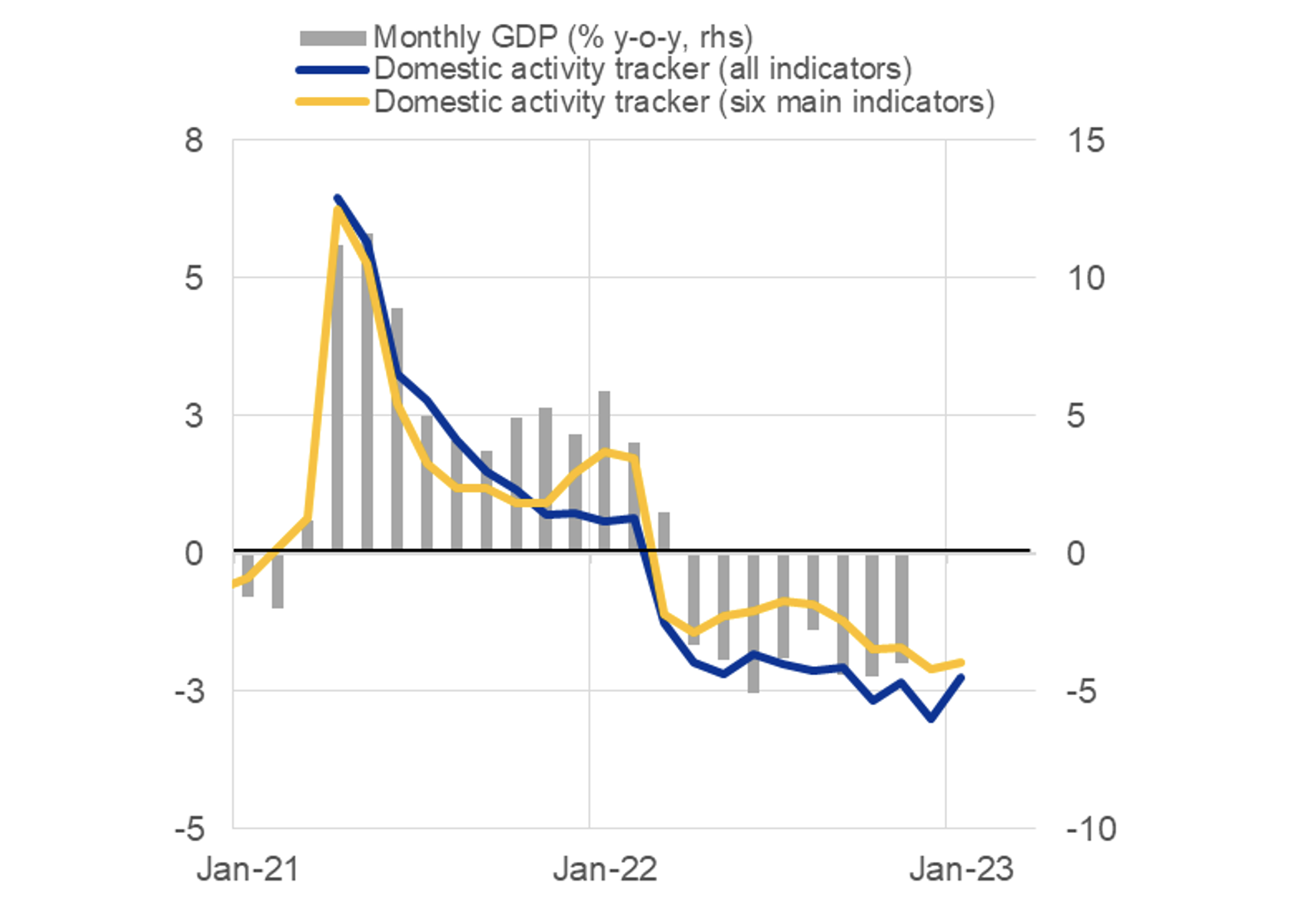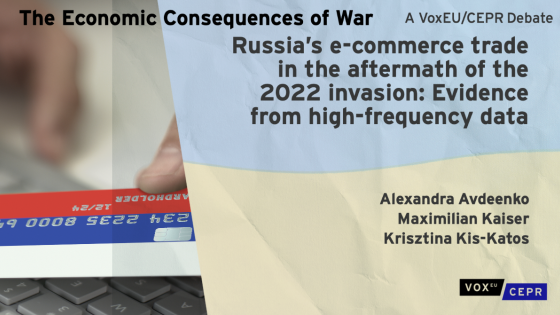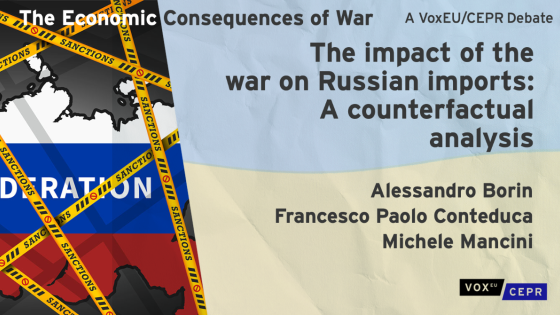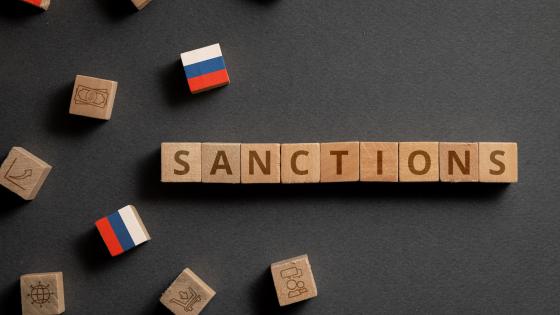Russia’s war in Ukraine and the following unprecedented sanctions imposed by large parts of the international community have increased the importance of tracking economic activity in Russia. A timely understanding of developments helps assess the impact of sanctions, and ultimately contributes to guide further policy action.
However, the Russian government is making this task increasingly hard by limiting statistical information coming out of Russia. Extensive work has gone into uncovering economic activity related to Russia, intensifying substantially after their invasion of Ukraine on 24 February 2022. This is particularly the case for Russian trade flows, where the benchmark has now become using mirror statistics from trading partners (Conteduca et al. 2022) and for international financial flows (Simola 2022b, Coccoza et al. 2022).
Yet, more of an information gap remains on domestic activity within Russia. Kaiser et al. (2022) look at e-commerce transactions among Russian firms following the invasion, whereas Avila-Uribe and Nigmatulina (2023) uncover migration incentives using airfare data. To provide further evidence, we identify and combine 15 different indicators to construct a tracker of domestic activity. The tracker exhibits a high correlation to monthly GDP growth, released by the Russian Ministry for Economic Development, suggesting that it provides a useful signal to track aggregate developments in the Russian economy (Figure 1).
Figure 1 Monthly GDP and the domestic activity tracker
Notes: Correlation from May 2018 to November 2022. Latest observation: January 2023 (data coverage until 6 February 2023).
Source: Ministry of Economic Development of Russia and ECB staff calculations.
At the same time, the activity tracker complements key high frequency indicators (such as industrial production, retail sales, and business confidence) from the Russian Federal Statistics Service, Rosstat. By providing a signal on activity that is independent of Rosstat, the tracker allows for a robustness check of information released officially by Russia.
Alternative indicators of activity
Our key criterion for selecting the indicators that comprise the tracker is their independence of Rosstat. We identify 15 of such economic indicators (Table 1). First, we make use of goods exports from Russia’s main trading partners to Russia, based on data from 38 respective national authorities. We also make use of Russia’s PMI Service index from S&P Global and vehicle sales from the Association of European Businesses. From the Bank of Russia, we gather data on loan volumes to private and corporate entities, as well as the volume of financial transactions going through the National Payments System.
Of a more explorative nature, we gather real estate prices and sales listings of housing units in the primary and secondary market, respectively, from one of the largest real estate listing websites, DomClick.ru. From the largest (yet state-owned) bank in Russia, Sberbank, we collect private customers’ spending on services, corporate customers retail sales, and the number of active sales terminals among corporate customers. We also make use of Google to gauge internet search activity in Russia related to industrial output and unemployment concerns. To track consumer spending trends, we use the FMCG Index from a commercial consumer panel of a Russian marketing research firm, Romir. Finally, we benefit from satellite-based data on pollution across Russia’s 15 most populous regions, and information on Russian domestic and international air traffic, both from an independent data provider, QuantCube. Initially, we also included aggregate electricity consumption in our tracker. However, the publicly available information had been discontinued by the Russian power system operator, the data provider, as we were writing this column.
We acknowledge a range of issues regarding the data we are using. For instance, although we commit to not use Rosstat statistics amid potential reliability concerns, we allow for the use of some official national sources. For example, we use several indicators from the Bank of Russia and Sberbank. In the end, we take a pragmatic approach to the selection process as the number of available alternative indicators is limited at best. We focus more on quantity and sample length than quality, although acknowledging the credibility issues raised above.
Table 1 Alternative high-frequency indicators
Source: Compiled by the authors.
Constructing the tracker
Combining these variables, the domestic activity tracker reflects their first principal component. Before applying principal component analysis (PCA), we transform the data by looking at year-on-year changes that are detrended and standardised. This approach is inspired by the standard literature on activity trackers with the San Francisco Fed’s China Cyclical Activity Tracker (Fernald et al. 2021) as an example. In order to balance the data set to perform principal component analysis, we use an autoregressive process to forward extend the sample length of the indicators that have a longer publication lag.
The sample length of many indicators is generally very limited. To address this, we propose two different specifications of our activity tracker. One using six indicators with a longer data coverage (exports to Russia, Google searches related to industrial activity, loan volumes, the PMI Service index, vehicle sales, and air traffic), and one using all 15 available indicators. The longer-sample-tracker has the advantage of allowing for a more comprehensive comparison to historical economic developments. Comparing the two specifications (Figure 2) suggests that indeed they do reflect similar dynamics. Therefore, we decided to use the longer-sample-tracker as our benchmark tracker for the time being.
Figure 2 Real final consumption and different activity tracker specifications
Note: Latest observation: January 2023 (data coverage until 6 February 2023).
Source: Russia’s Ministry for Economic Developments and authors’ calculations.
Interpreting the tracker
Our domestic activity tracker points to a sharp contraction of economic activity in March, following Russia’s invasion of Ukraine. After the initial decline, activity stabilised over the summer, as also reflected in official data on industrial production and retail sales. In recent months, official output indicators have remained stable or even improved, buoyed by war-related manufacturing. However, this stands in contrast to our tracker which has gradually declined, signalling a loss of momentum in the Russian economy compared to official statistics. The divergence likely reflects that our activity tracker mainly picks up developments in private domestic demand, where the effects of sanctions seem to materialise to a larger extent, and to a lesser extent public demand in domestic warfare-related sectors.
To provide some interpretation of the developments, we look at the respective indicators’ contribution (Figure 3). We decompose the indicators into three categories: household spending (exports to Russia, vehicle sales), business activity (Google searches related to industrial activity, PMI Service index, and air traffic) and real estate (real estate prices). The decomposition shows that household spending largely drove the initial contraction in March and that it has stayed subdued since then. This reflects in part the sharp decline in imports due to sanctions that severely limited the possibility to consume Western goods, supporting that the sanctions served their purpose in impeding domestic activity in Russia. This is mirrored in the specification of the tracker which includes all the indicators (described above).
Figure 3 Contributions to tracker developments
Notes: Contributions are computed as the eigenvalues of the principal component analysis multiplied with the standardised variable. Latest observation: January 2023 (data coverage until 6 February 2023).
Source: Authors’ calculations.
The decomposition further shows that business activity contributed to the economic stabilisation over the summer, despite initially contracting at the onset of the war. However, the loss of momentum in recent months reflects a renewed worsening of business activity and stagnating real estate prices in Russia. This might reflect in part the increasing effect of sanctions on production capabilities of Russian firms, but also the partial mobilisation announced in September 2022, which likely has reduced the labour force, dragging on production capabilities.
As a robustness check, we plot our tracker against a tracker based solely on key monthly economic indicators from Rosstat (Figure 4). We construct this in a similar fashion using information on retail trade, industrial production, business confidence, service consumption, registered unemployment, and capacity utilisation in manufacturing. Comparing the two, our proposed alternative tracker picks up most of the developments in the official economic data, and even seems to provide early warnings ahead of major shocks.
Figure 4 The alternative tracker compared to official data
Note: Latest observation: January 2023 (data coverage until 6 February 2023).
Source: Authors’ calculations.
Conclusion
We construct a tracker of Russian domestic economic activity based on alternative monthly indicators that are independent of the official Russian statistical service. The tracker helps assess the depth and length of ongoing recession in Russia. It currently points to a further loss of momentum driven by stagnating real estate prices and lower business activity in recent months, which is not yet fully reflected in the official data releases.
Authors’ note: The views expressed here are those of the authors and do not necessarily reflect those of the European Central Bank.
References
Avila-Uribe, A and D Nigmatulina (2023), “Flight from Russia”, VoxEU.org, 6 February.
Brave, S (2008), “Economic Trends and the Chicago Fed National Activity Index”, Chicago Fed Letter 250.
Cocozza, E, F Corneli, V Della Corte and M Zangrandi (2023), “In search of Russia’s foreign assets”, VoxEU.org, 10 January.
Conteduca, F P, M Mancini and A Borin (2022), “The impact of the war on Russian imports: A counterfactual analysis”, VoxEU.org, 9 November.
Fernald, J, N Gerstein and M Spiegel (2019), "How Severe Is China’s Slowdown? Evidence from China CAT", FRBSF Economic Letter 2019:26.
Fernald, J, E Hsu and M Spiegel (2021), “Is China fudging its GDP figures? Evidence from trading partner data”, Journal of International Money and Finance 110, 102262.
Kaiser, M, K Kis-Katos and A Avdeenko (2022), “Russia’s e-commerce trade in the aftermath of the 2022 invasion: Evidence from high-frequency data”, VoxEU.org, 19 May.
Simola, H (2022a), “Russian foreign trade after four months of war in Ukraine”, Bank of Finland Institute for Emerging Economies, Policy Brief.
Simola, H (2022b), “War and sanctions: Effects on the Russian economy”, VoxEU.org, 15 December.
